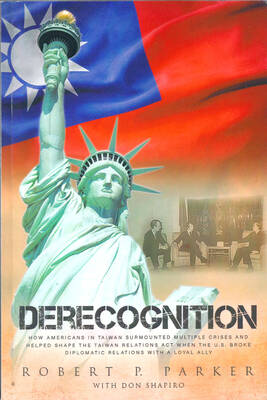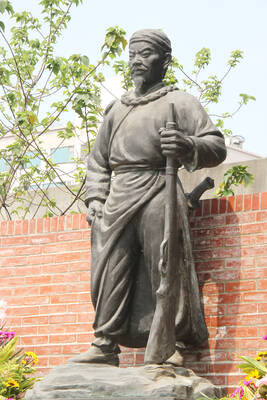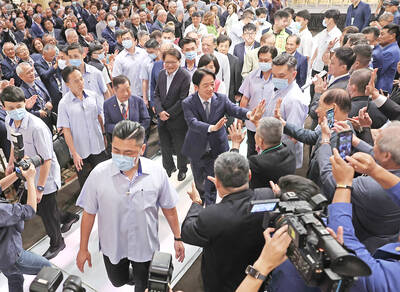The mystery of an ancient Mesopotamian city has finally been lifted after 25 years of meticulous work by a French archeologist who has revealed it was one of the first "modern cities," purpose-built in the desert for the manufacture of copper arms and tools.
In a new book entitled Mari, the Metropolis of the Euphrates, Jean-Claude Margueron said the third millennium BC city, in modern-day Syria, was "one of the first modern cities of humanity. Created from scratch in one phase of construction with the specific goal of becoming this [metallurgical] center."
This was an astounding concept for the period when cities developed from villages or trading posts and showed that the Mesopotamians were way ahead of their time in terms of urban design and development.

PHOTO: AFP
"How could a city develop in the third millennium BC in the middle of the desert, in a region devoid of copper and in a valley devastated by the floods of the Euphrates making any agriculture very risky?"
In an interview, Margueron, 70, repeated the question which haunted him during the decades of excavations of Mari, discovered in 1933 by his predecessor Andre Parrot.
In 1935, the temple of Ishtar, the statue of King Lamgi Mari, then the Grand Palace of the second millennium, and other temples and fabulous sculptures were discovered, followed by the living areas and a part of the third-millennium palace.
When Margueron took over as director of excavations in 1979, most of the spectacular pieces had already been discovered. But the question remained: Why had they built Mari?
To rediscover the city, Margueron spent thousands of hours examining the basements, the terraces, the living quarters, traces of streets and the former river bed of the Euphrates and other waterways.
"So they were discoveries, not always spectacular, rarely immediately important, but very significant for the overall understanding of the site and its integration in the geographical, historical and economic context," Margueron said.
The major revelation of Mari -- spread over a dozen years but unpublished until now -- was the existence of a major center of metallurgy, dating from 2900 BC.
"In fact the metallurgy was everywhere in the city. It was the existence of this lucrative activity -- Mari produced arms and tools -- which justified everything which we had found previously," said Margueron.
A major navigable canal was discovered that followed the Euphrates river for 120km and allowed the transport of copper and wood from the Tauras mountains of modern Turkey to support the metallurgical activities of Mari.
They also discovered an irrigation channel that allowed agricultural production in an area that otherwise did not receive sufficient rainfall to grow crops. A third canal protected the city from flooding and allowed large boats to enter the city, which was also protected by a levy bank and double ramparts.
"The builders of Mari knew the profits they could make from an economic hub between the south of Mesopotamia and the north, between the east and the Mediterranean.
"The innumerable riches of the archeological discoveries made during these excavations shows they were right."

One of the biggest sore spots in Taiwan’s historical friendship with the US came in 1979 when US president Jimmy Carter broke off formal diplomatic relations with Taiwan’s Republic of China (ROC) government so that the US could establish relations with the People’s Republic of China (PRC). Taiwan’s derecognition came purely at China’s insistence, and the US took the deal. Retired American diplomat John Tkacik, who for almost decade surrounding that schism, from 1974 to 1982, worked in embassies in Taipei and Beijing and at the Taiwan Desk in Washington DC, recently argued in the Taipei Times that “President Carter’s derecognition

JUNE 30 to JULY 6 After being routed by the Japanese in the bloody battle of Baguashan (八卦山), Hsu Hsiang (徐驤) and a handful of surviving Hakka fighters sped toward Tainan. There, he would meet with Liu Yung-fu (劉永福), leader of the Black Flag Army who had assumed control of the resisting Republic of Formosa after its president and vice-president fled to China. Hsu, who had been fighting non-stop for over two months from Taoyuan to Changhua, was reportedly injured and exhausted. As the story goes, Liu advised that Hsu take shelter in China to recover and regroup, but Hsu steadfastly

You can tell a lot about a generation from the contents of their cool box: nowadays the barbecue ice bucket is likely to be filled with hard seltzers, non-alcoholic beers and fluorescent BuzzBallz — a particular favorite among Gen Z. Two decades ago, it was WKD, Bacardi Breezers and the odd Smirnoff Ice bobbing in a puddle of melted ice. And while nostalgia may have brought back some alcopops, the new wave of ready-to-drink (RTD) options look and taste noticeably different. It is not just the drinks that have changed, but drinking habits too, driven in part by more health-conscious consumers and

On Sunday, President William Lai (賴清德) delivered a strategically brilliant speech. It was the first of his “Ten Lectures on National Unity,” (團結國家十講) focusing on the topic of “nation.” Though it has been eclipsed — much to the relief of the opposing Chinese Nationalist Party (KMT) and Taiwan People’s Party (TPP) — by an ill-advised statement in the second speech of the series, the days following Lai’s first speech were illuminating on many fronts, both domestic and internationally, in highlighting the multi-layered success of Lai’s strategic move. “OF COURSE TAIWAN IS A COUNTRY” Never before has a Taiwanese president devoted an entire speech to